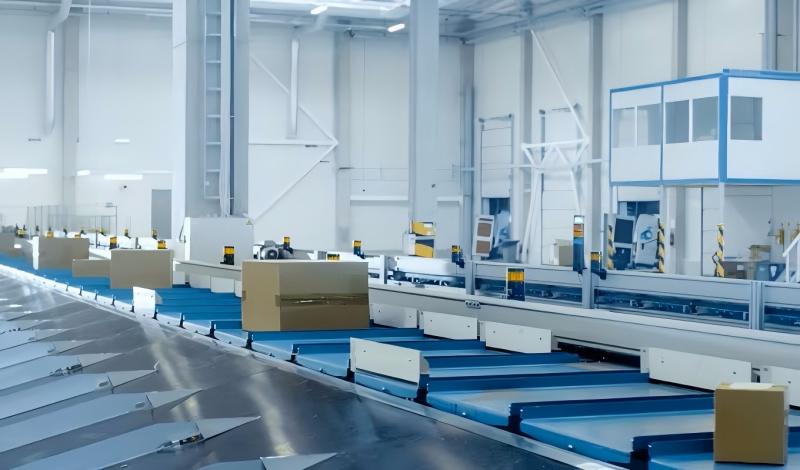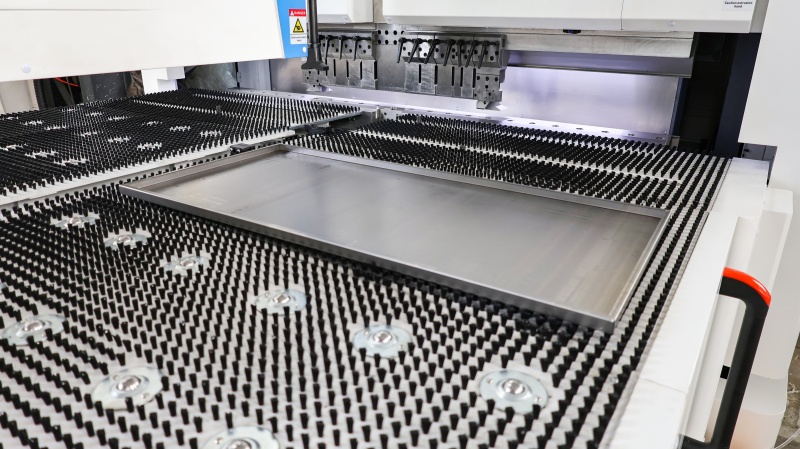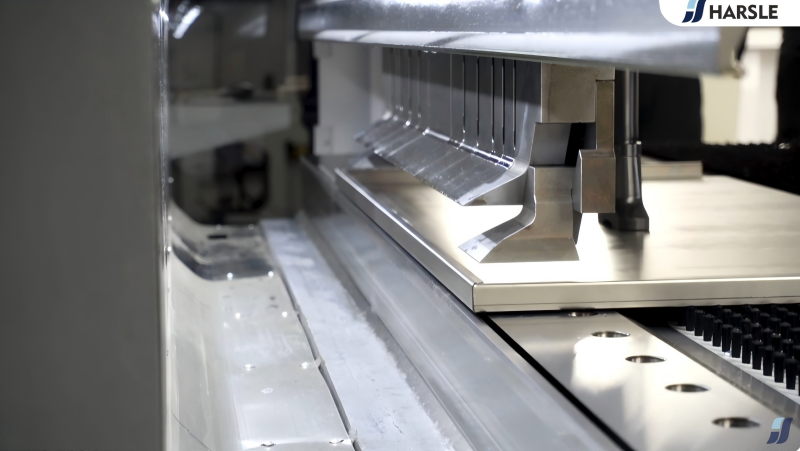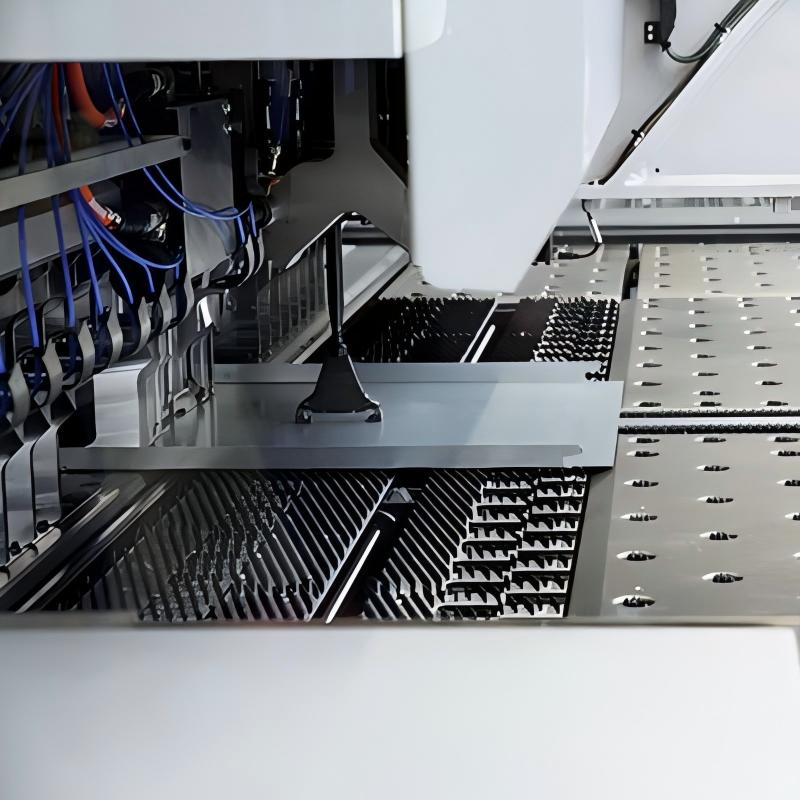Documentation Hub
Comprehensive technical manuals and guides to help you master HARSLE machines and optimize your metalworking efficiency
What Are the Advantages of Panel Bender in Logistics Equipment?
Panel Bender in Logistics Equipment Production plays a vital role in achieving precision, flexibility, and efficiency in modern manufacturing. Producing shelves, trolleys, racks, and conveyor frames requires consistent bending accuracy and stable quality across every component. That’s why more manufacturers are turning to panel benders to streamline their processes. In this article, I’ll show you how panel benders enhance production performance, the key advantages they deliver, and how they can help your business reduce costs, speed up delivery, and ensure top-quality results.
The Role of Panel Bender in Logistics Equipment Manufacturing

The logistics industry relies on robust and accurately formed sheet metal components to ensure safety and durability. Traditional bending machines often require manual adjustments and multiple setups, which reduce efficiency. A panel bender solves these problems with automatic tool adjustments, intelligent software control, and servo-driven accuracy.
Unlike conventional press brakes, a panel bender can bend complex parts without repositioning the sheet, allowing for smooth, automated forming of warehouse frames and material-handling panels.
Key Advantages of Using Panel Bender in Logistics Equipment Production
1. High Efficiency and Shorter Cycle Times

In logistics equipment manufacturing, large batches and repeated components are common. A panel bender drastically reduces cycle time by automatically adjusting tooling and bending angles. Operators can load a blank sheet, start the cycle, and get a finished part within seconds. This automation eliminates downtime between jobs and keeps production consistent even during high-volume runs.
2. Exceptional Bending Accuracy
Thanks to its servo-controlled axes and closed-loop feedback system, a panel bender ensures every bend is within a precise tolerance. For logistics racks and containers where alignment is critical, this accuracy guarantees that all parts fit perfectly during assembly. The repeatability also minimizes waste caused by human error or material misalignment.
3. Labor Savings and Easier Operation

Traditional bending machines often depend heavily on skilled operators. In contrast, panel benders feature user-friendly touchscreens and automatic programming. Even less experienced workers can produce high-quality results by following guided instructions. This reduces training costs and allows your workforce to focus on other key production tasks.
4. Versatility for Multiple Designs
Warehouse and logistics equipment come in various shapes and sizes—shelves, cabinets, doors, or brackets. The panel bender’s flexible tooling adapts automatically to different designs without frequent tool changes. Whether bending thin panels for enclosures or thick plates for storage systems, the same machine can handle both tasks efficiently.
5. Improved Safety and Working Conditions
Manual bending operations require frequent physical effort and close interaction with tools. Panel benders reduce this risk through automatic sheet handling, safety sensors, and ergonomic loading systems. The operator only needs to monitor the process, which enhances workplace safety and comfort.
How Panel Bender Enhances Production Quality
Consistent Bending Results
Every bend performed by a panel bender follows preprogrammed parameters. The intelligent control system monitors each stage of the process, ensuring consistent angles and uniform dimensions across batches. This reliability is crucial for modular logistics systems where interchangeability matters.
Reduced Material Waste

Precision control means less trial-and-error and fewer rejected parts. The combination of accurate positioning and minimal setup adjustments optimizes material use and reduces scrap, lowering overall production costs.
Integration with Smart Manufacturing Systems
Modern panel benders can integrate seamlessly with CAD/CAM software or warehouse automation lines. This allows for digital production tracking, quick design updates, and remote monitoring—essential for Industry 4.0 manufacturing environments.
Common Applications in Logistics and Warehouse Manufacturing
- Storage shelves and racking systems
- Material handling trolleys and carts
- Pallet and container frames

- Protective panels and covers for conveyors
- Automated sorting system components
With these diverse applications, the panel bender becomes a key asset for manufacturers aiming to scale up and modernize their operations.
FAQs
What materials can be bent with a panel bender for logistics equipment?
Panel benders can handle mild steel, stainless steel, aluminum, and galvanized sheets, commonly used in warehouse and logistics structures.
How does a panel bender improve consistency in mass production?
The machine’s servo system and intelligent software maintain uniform bending angles and dimensions across thousands of cycles without manual adjustments.
Is a panel bender suitable for small-batch or custom logistics products?
Absolutely. With quick programming and automatic tool adjustment, it’s ideal for both mass production and customized parts with varying designs.
What maintenance does a panel bender require?
Regular inspection of lubrication points, cleaning of sensors, and software calibration are sufficient to keep the system running smoothly.
Conclusion
Using a Panel Bender in Logistics Equipment Manufacturing is not just about automation—it’s about smarter, faster, and safer production. From increasing bending accuracy to reducing labor intensity and material waste, the advantages are clear. If you’re looking to modernize your logistics or warehouse equipment production line, a panel bender can help you achieve higher productivity and consistent quality.













